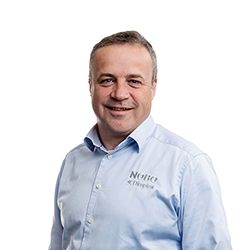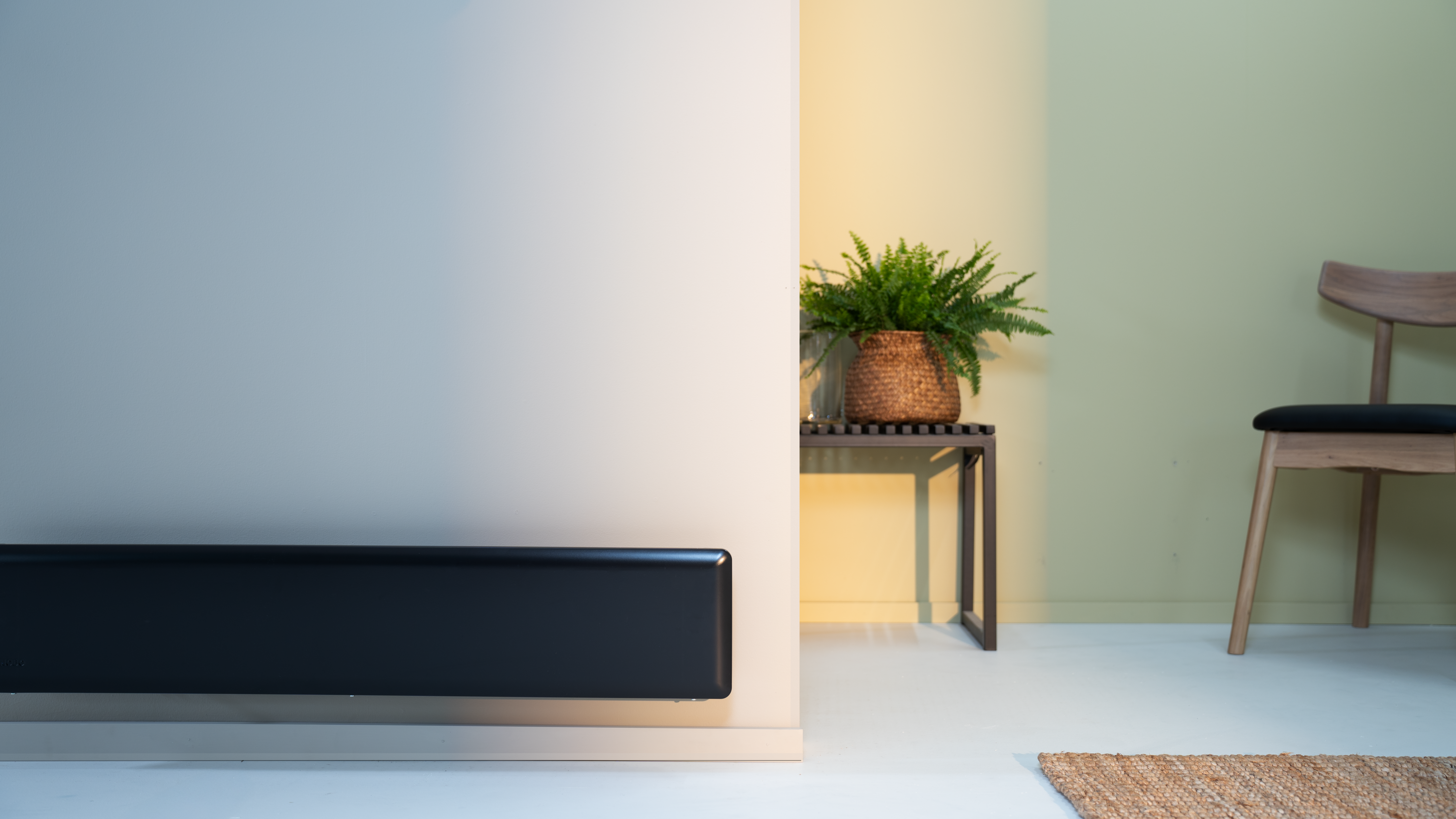The regulations in TEK17 require that at least 60 percent of the calculated net energy demand in new buildings over 1000 sqm must come from energy-flexible heating systems. This has often led to 100 percent of the heating being provided by hydronic (water-based) systems. However, a new independent report from Rambøll now shows that in some cases, there may be better and more cost-effective alternatives.

It’s often said that only hydronic heating should be used in residential buildings over 1000 sqm. However, there are still good opportunities to use electric heating in such buildings,” assures Arne Hoseth at Glen Dimplex Nordic.
It was taken as a given that only hydronic heating should be used in buildings over 1000 sqm,” says Arne Hoseth, Nordic Product Manager at Glen Dimplex Nordic. “So, we considered this market lost. But we know that some installers still use our panel heaters and electric heating cables in projects of this kind.
It’s often said that only hydronic heating should be used in residential buildings over 1000 sqm. However, there are still good opportunities to use electric heating in such buildings,” assures Arne Hoseth at Glen Dimplex Nordic.
One of these projects is the new apartment blocks being built on the site of the old JL Tiedemanns Tobacco Factory at Ensjø in Oslo.
“In the 322 apartments in section G, the main contractor Veidekke and the developers Selvaag Bolig and Ferd allowed us to use panel heaters and electric heating in combination with hydronic systems,” says Rune Aasberg, project manager at Romerike Elektro, who is responsible for all electrical installations at the site.
Fakta
They emphasize that the size of the building or the number of apartments is not decisive for the results in the report. The same principles apply to other residential blocks over 1000 sqm.
Rambøll has examined three typical levels in terms of energy performance:
Example 1 (TEK 17):A building that meets the TEK17 standard, fulfilling the minimum requirements for U-values and air tightness. This is a building that just meets the requirement for net energy demand in § 14-2.
Example 2 (TEK 17+):A building where energy efficiency measures have been implemented, resulting in a lower heating demand. Here, the net energy demand is less than 90% of that of a typical TEK17 building.Example 3: (Passive house):A building that meets the passive house criteria according to NS 3700:2013. This type of building has a very low heating demand (< 15 W/m²).
Much More Flexibility with Panel Heaters
We meet the 60 percent requirement by using hydronic heating as the energy source for ventilation, domestic hot water, and underfloor heating in the bathrooms of the apartments,” explains Kristoffer Gregersen, Executive Vice President of Communications and Sustainability at Selvaag Bolig AS. “It’s important to remember that hot water is the largest energy consumer. And since the homes we build today are very energy-efficient, one or two panel heaters are often sufficient to heat the living areas. A panel heater is also much easier to move compared to a fixed, water-based radiator. So electric heating is a flexible solution — both for the developer and the residents.





